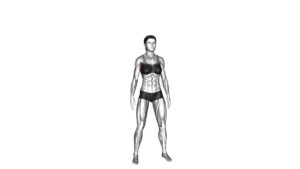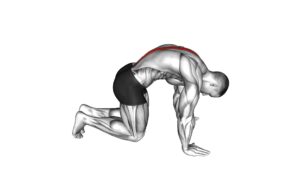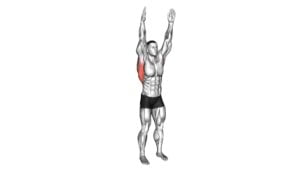Slopes Towards Stretch (male) – Video Exercise Guide & Tips

Looking to improve your flexibility and stretch those muscles? Check out our video exercise guide and tips for slopes towards stretch.
Watch This Exercise Video
In this informative and concise article, we'll discuss the benefits, proper technique, common mistakes to avoid, and variations for different fitness levels.
Plus, we'll provide you with tips on how to get the most out of this exercise and incorporate it into your workout routine.
So, get ready to level up your stretching game with slopes towards stretch!
Key Takeaways
- Slopes towards stretch improves flexibility and increases range of motion in muscles.
- Proper technique for slopes towards stretch includes maintaining a straight back, engaging core muscles, and breathing deeply.
- Common mistakes to avoid during slopes towards stretch include not warming up, rounding the back, and performing jerking movements.
- To achieve maximum flexibility, it is important to maintain proper form and technique, practice consistently, and hold the stretch for 15-30 seconds while taking deep breaths.
Benefits of Slopes Towards Stretch
To understand the benefits of slopes towards stretch, you should know that it helps improve flexibility and increase range of motion in your muscles. Stretching on slopes is an effective way to improve flexibility because it allows your muscles to lengthen and relax. When you stretch on a slope, gravity assists in pulling your muscles further, enabling a deeper stretch and promoting greater flexibility. This is especially beneficial for tight muscles that may be limiting your range of motion.
Regularly incorporating slopes into your stretching routine can also help prevent muscle tightness. Stretching on slopes helps to release tension in the muscles and promotes blood flow, which can prevent muscle tightness and reduce the risk of muscle strains and injuries. By improving flexibility and preventing muscle tightness, slopes towards stretch can contribute to overall better physical performance and enhance your ability to move freely.
Proper Technique for Slopes Towards Stretch
To perform the slopes towards stretch exercise with proper technique, it's important to avoid common mistakes and focus on achieving maximum flexibility. By maintaining a straight back, engaging your core, and slowly leaning forward from the hips, you can ensure that you're targeting the right muscles and minimizing the risk of injury.
Remember to breathe deeply and hold the stretch for a few seconds before returning to the starting position.
Avoiding Common Mistakes
Maintain proper form and technique to avoid common mistakes when performing the slopes towards stretch exercise. To ensure you're performing this exercise correctly and prevent injury, keep the following in mind:
- Warm up before starting the slopes towards stretch. This will prepare your muscles and joints for the movement, reducing the risk of strains or sprains.
- Avoid rounding your back during the exercise. Keep your spine neutral and engage your core to maintain stability.
- Don't rush the movement. Slow and controlled motions are key to getting the most out of this stretch and avoiding sudden jerks that can lead to injury.
- Pay attention to your breathing. Inhale deeply before starting the stretch and exhale as you reach forward, allowing your body to relax and increase flexibility.
Achieving Maximum Flexibility
To achieve maximum flexibility in the slopes towards stretch exercise, focus on maintaining proper form and technique.
Improving flexibility requires consistent practice and the use of effective stretching techniques.
Start by standing with your feet shoulder-width apart and your knees slightly bent. Slowly bend forward at the waist, keeping your back straight and your head aligned with your spine.
As you reach your maximum stretch, hold the position for 15-30 seconds while taking deep breaths.
Remember to relax your muscles and avoid bouncing or jerking movements. Engage your core muscles to support your spine and maintain balance.
By following these proper techniques, you'll be able to achieve a greater range of motion and increase your flexibility.
Now, let's move on to the next section and discuss common mistakes to avoid.
Common Mistakes to Avoid
Avoid these common mistakes when performing the Slopes Towards Stretch exercise. To achieve flexibility effectively and prevent injury, it's important to be mindful of the following:
- Rushing the movement: Take your time and perform the exercise slowly and controlled. Rushing through the motion can lead to improper form and reduce the effectiveness of the stretch.
- Neglecting proper alignment: Ensure that your body is aligned correctly throughout the exercise. Keep your back straight, shoulders relaxed, and engage your core muscles. Improper alignment can strain your muscles and hinder your progress.
- Overstretching: While it's important to challenge yourself, avoid pushing your body beyond its limits. Overstretching can lead to muscle strains and other injuries. Listen to your body and only stretch to a comfortable level.
- Not breathing properly: Remember to breathe deeply and rhythmically throughout the exercise. Holding your breath can increase tension in your muscles and limit your flexibility gains.
Variations and Modifications for Different Fitness Levels
Now let's talk about variations and modifications for different fitness levels.
It's important to adapt exercises to your fitness level to ensure safety and progress.
Beginners can start with modified versions of the exercise, gradually increasing intensity and difficulty as they become more comfortable and stronger.
Fitness Level Adaptations
Start by adapting the exercise variations and modifications to accommodate different fitness levels. Here are some options to consider:
- Progression Options: If you're looking to challenge yourself and take your fitness to the next level, try increasing the weight or resistance used during the exercise. You can also perform the exercise at a faster pace or increase the number of repetitions.
- Advanced Modifications: For those who've already mastered the basic form of the exercise, there are advanced modifications to keep pushing yourself. This can include adding instability, such as performing the exercise on a balance board or stability ball. You can also try performing the exercise on an incline or decline to target different muscle groups.
- Decreased Intensity: If you're just starting out or have certain physical limitations, it's important to modify the exercise to suit your fitness level. This can involve using lighter weights or resistance bands, performing fewer repetitions, or reducing the range of motion.
- Alternative Movements: If the exercise is too challenging or not suitable for your fitness level, there are alternative movements you can try. This can involve using different equipment or targeting the same muscle groups with different exercises.
Modifications for Beginners
As you continue adapting the exercise variations and modifications to accommodate different fitness levels, let's now explore the modifications specifically designed for beginners. These beginner modifications are perfect for those who are new to exercise or have limited experience.
It's important to start slowly and gradually increase intensity and difficulty as you build strength and endurance. For beginners, it's recommended to start with lower weights or resistance bands and focus on mastering the proper form and technique.
You can also try performing the exercises at a slower pace and with fewer repetitions. Additionally, incorporating modifications such as using a stability ball or performing exercises on an incline can help beginners build their strength and stability.
Remember to listen to your body and progress at your own pace.
Tips for Getting the Most Out of the Exercise
To maximize your results, focus on maintaining proper form and engaging your core throughout the Slopes Towards Stretch exercise. This won't only help you avoid injury but also ensure that you're getting the most out of this stretching exercise.
Here are a few tips to help you get the most out of the exercise:
- Keep your back straight: It's important to maintain a straight back throughout the exercise to target the right muscles and avoid straining your back.
- Engage your core: By activating your core muscles, you won't only improve your stability but also enhance the effectiveness of the stretch.
- Breathe deeply: Deep breathing helps to relax your muscles and promote better flexibility. Remember to inhale deeply as you move into the stretch and exhale as you release.
- Gradually increase the stretch: Start with a gentle slope and gradually increase the intensity of the stretch over time. This will allow your muscles to adapt and improve flexibility without causing any discomfort.
Incorporating Slopes Towards Stretch Into Your Workout Routine
To incorporate Slopes Towards Stretch into your workout routine, consider adding this exercise as a dynamic stretching warm-up before your main workout. Incorporating slopes towards stretch can provide several benefits for your overall fitness and flexibility.
Firstly, this exercise helps to warm up your muscles and increase blood flow to the targeted areas. By starting with slopes towards stretch, you can prepare your body for more intense physical activity and reduce the risk of injury.
Additionally, incorporating slopes towards stretch can improve your flexibility and range of motion. This exercise focuses on stretching the muscles in your lower back, hamstrings, and calves, which can help to alleviate tightness and improve overall mobility.
Furthermore, slopes towards stretch can also help to improve your posture. By stretching the muscles in your lower back, this exercise can help to correct imbalances and promote better alignment.
To incorporate slopes towards stretch into your workout routine, start by finding a suitable incline or slope. Begin by standing with your feet shoulder-width apart and lean forward, keeping your back straight, until you feel a stretch in your lower back and hamstrings. Hold the stretch for about 20-30 seconds and repeat for a few sets.
Frequently Asked Questions
Can Slopes Towards Stretch Help Improve Flexibility in Other Areas of the Body?
Slopes towards stretch is a great exercise for improving overall flexibility. By incorporating it into your full body workout routine, you can target different areas of the body and increase your range of motion.
This exercise specifically targets the muscles in your legs and lower back, but it also helps to stretch and strengthen other areas such as the hips and core.
Adding slopes towards stretch to your routine can have a positive impact on your flexibility throughout your entire body.
Is It Necessary to Use a Specific Type of Equipment for Slopes Towards Stretch?
When doing slopes towards stretch, you may wonder if you need specific equipment. The good news is that you have options.
While some people use a slant board or a yoga block to enhance the stretch, it's not necessary. You can still perform this exercise without any equipment.
However, if you're looking for alternative exercises to improve flexibility, there are other options like deep lunges or seated forward bends that can target different areas of your body.
How Often Should Slopes Towards Stretch Be Performed to See Results?
To see results from slopes towards stretch, it's important to perform them regularly. Consistency is key! Aim to do this exercise at least 2-3 times a week. By staying committed, you'll improve your flexibility over time.
Slopes towards stretch offer numerous benefits for flexibility, such as stretching the hamstrings and lower back muscles. Incorporate this exercise into your routine and watch your flexibility improve!
Can Slopes Towards Stretch Be Beneficial for Individuals With Back Pain or Injuries?
Slopes towards stretch can be beneficial for individuals with back pain or injuries. The exercise can be modified for those with mobility limitations by using props or adjusting the angle of the slope. It's important to consult with a healthcare professional or physical therapist for guidance.
Additionally, slopes towards stretch can be combined with other exercises for a full body stretching routine. This can help improve flexibility, reduce muscle tension, and promote overall mobility.
Are There Any Precautions or Contraindications to Be Aware of Before Attempting Slopes Towards Stretch?
Before attempting slopes towards stretch, it's important to be aware of any precautions or contraindications. These may vary depending on your individual circumstances, such as any pre-existing injuries or medical conditions.
It's always a good idea to consult with a healthcare professional or a qualified exercise specialist to determine if this exercise is suitable for you. They can provide personalized guidance and ensure your safety during the exercise.
Conclusion
Incorporating slopes towards stretch into your workout routine can provide numerous benefits, including improved flexibility and range of motion.
By following proper technique and avoiding common mistakes, you can maximize the effectiveness of this exercise.
Additionally, variations and modifications are available to accommodate different fitness levels.
Remember to always listen to your body and adjust the intensity as needed.
With consistent practice, slopes towards stretch can be a valuable addition to your fitness routine.

Author
Years ago, the spark of my life’s passion ignited in my mind the moment I stepped into the local gym for the first time. The inaugural bead of perspiration, the initial endeavor, the very first surge of endorphins, and a sense of pride that washed over me post-workout marked the beginning of my deep-seated interest in strength sports, fitness, and sports nutrition. This very curiosity blossomed rapidly into a profound fascination, propelling me to earn a Master’s degree in Physical Education from the Academy of Physical Education in Krakow, followed by a Sports Manager diploma from the Jagiellonian University. My journey of growth led me to gain more specialized qualifications, such as being a certified personal trainer with a focus on sports dietetics, a lifeguard, and an instructor for wellness and corrective gymnastics. Theoretical knowledge paired seamlessly with practical experience, reinforcing my belief that the transformation of individuals under my guidance was also a reflection of my personal growth. This belief holds true even today. Each day, I strive to push the boundaries and explore new realms. These realms gently elevate me to greater heights. The unique combination of passion for my field and the continuous quest for growth fuels my drive to break new ground.







